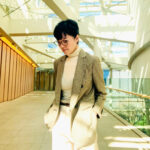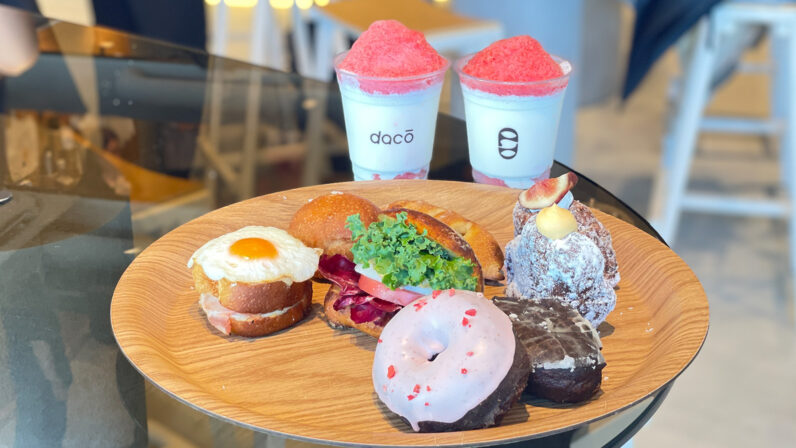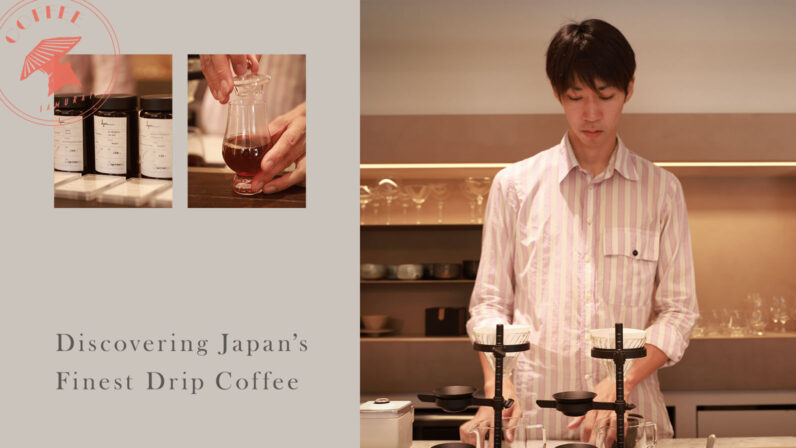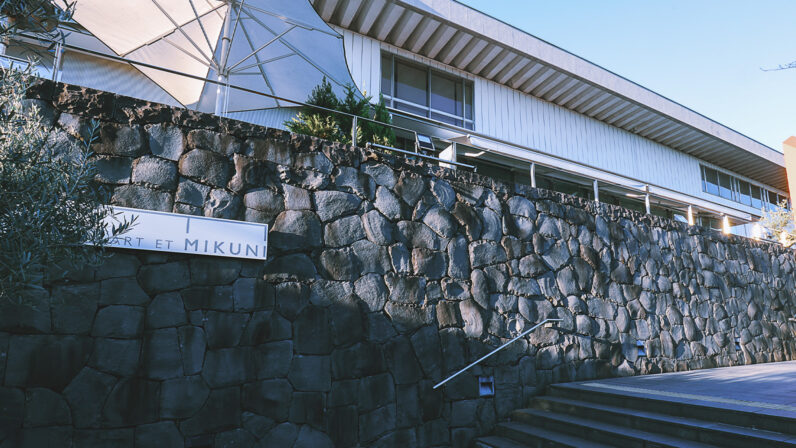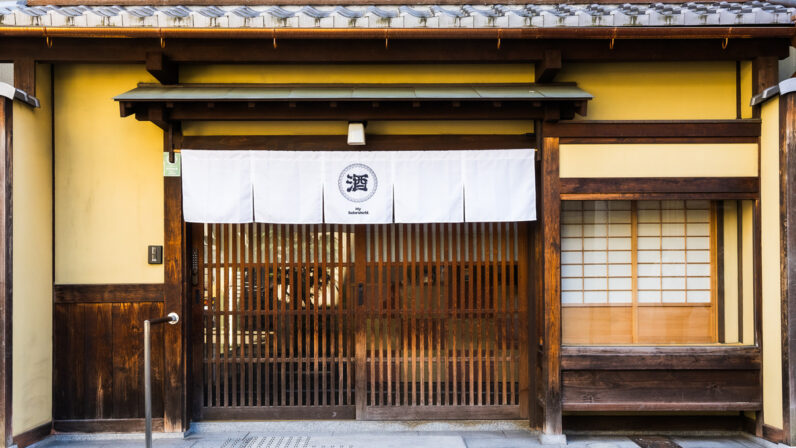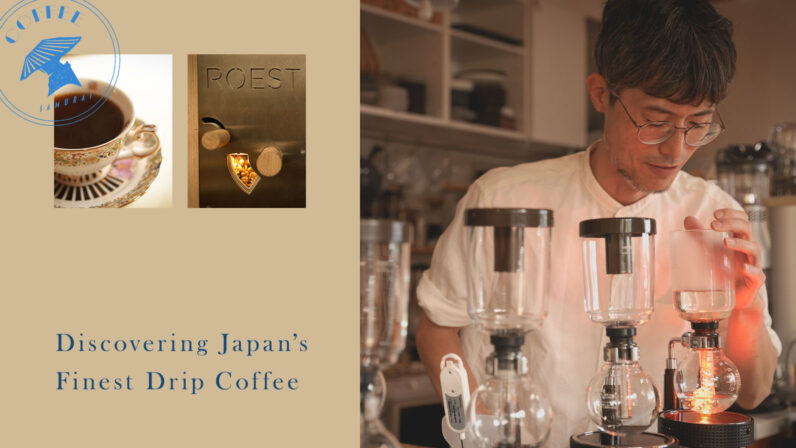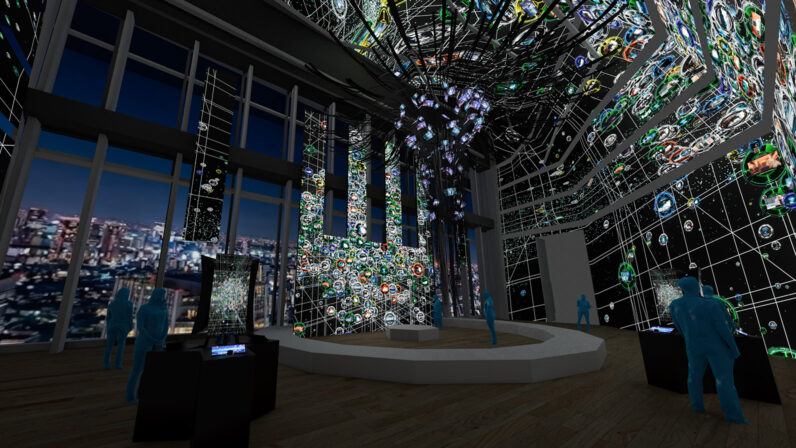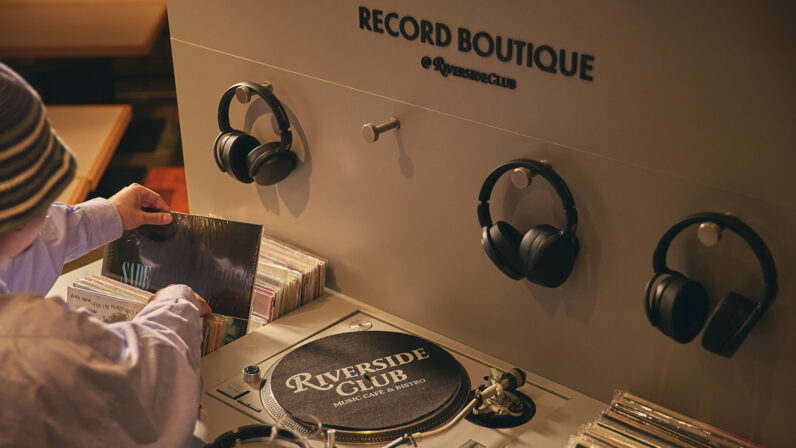In Japan, there are coffee shops that are dedicated to exploring the art of home roasting raw coffee beans, and using the hand-drip method to extract maximum flavor. In this series, we’ll be taking you on a journey to discover these exceptional places, where the passionate philosophy of the shop owners adds an extra layer of flavor.In this third installment, we feature Kazuki Yoshida of ‘Life Size Cribe’ in Kokubunji, a true craftsman whose unwavering commitment to integrity and precision results in coffee that distinctly conveys the essence of his artistry.
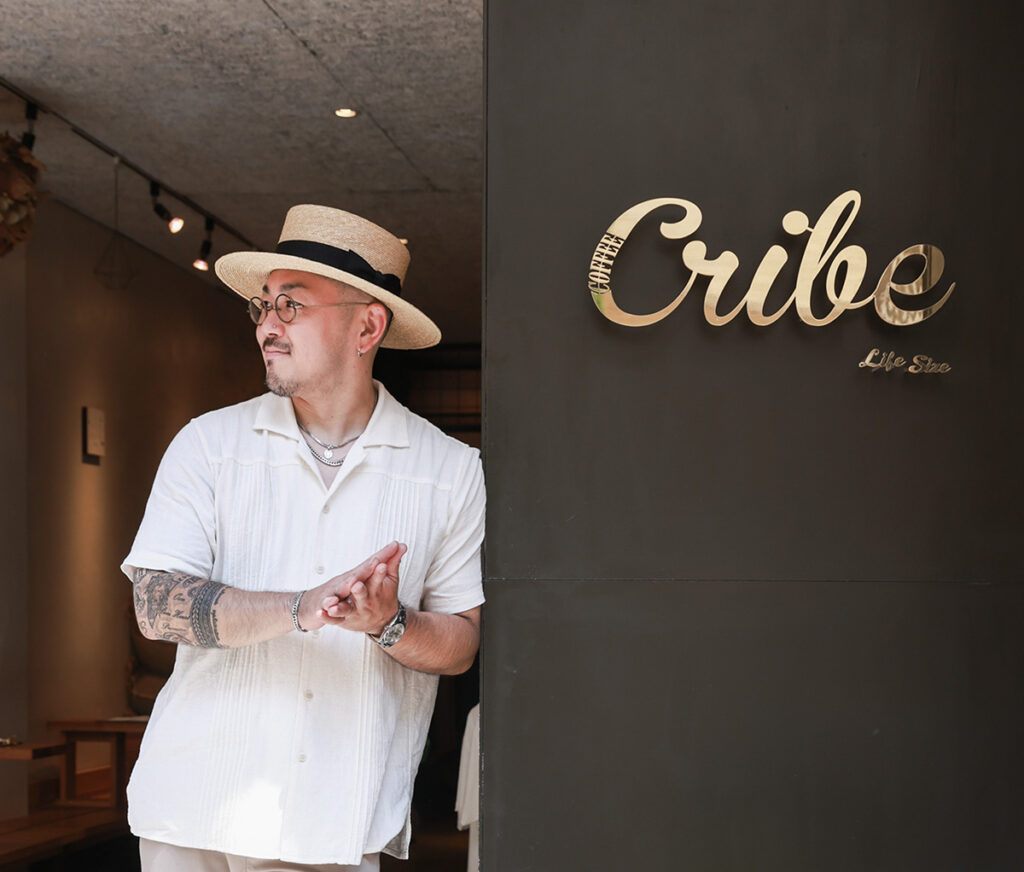
PROFILE
Kazuki Yoshida, born in 1987 in Saitama Prefecture, started his career at a major coffee chain after graduating from university. He then honed his skills for nearly two years at ‘Paul Bassett’ before striking out on his own. In 2015, he opened Life Size Cribe in Kokubunji.
The Art of Performance That Delivers a Profound Experience
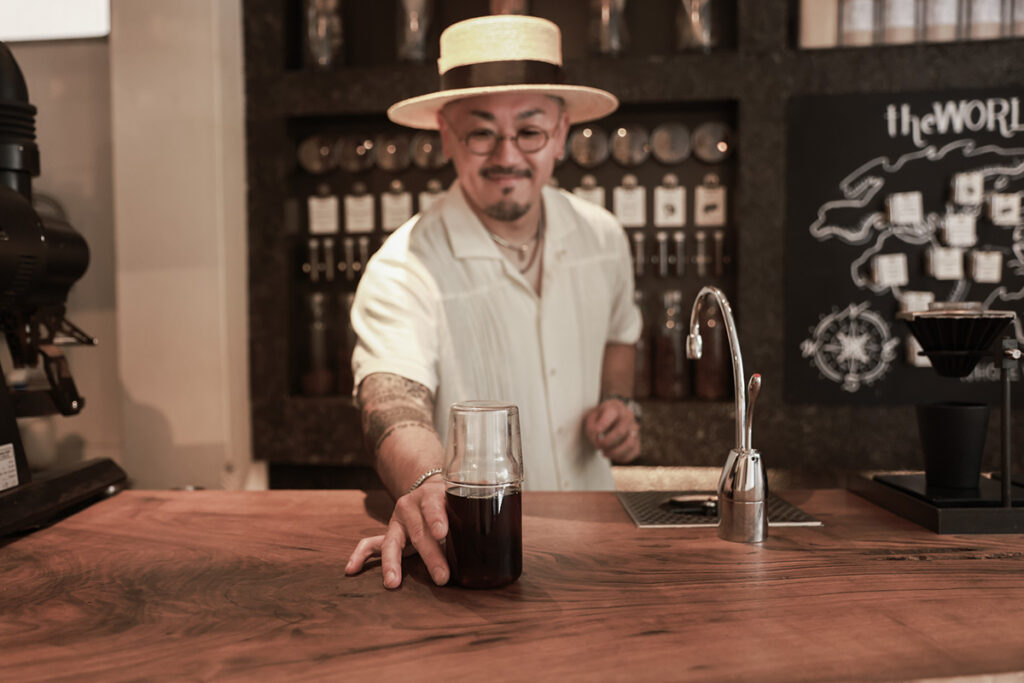
His graceful movements, right down to his fingertips, are reminiscent of a master bartender.
“How about we try the coffee now?”
Mid-interview, Yoshida headed to the counter. His precise and graceful movements, reminiscent of a magician’s flair, produced a cup of coffee that made his words even more compelling.
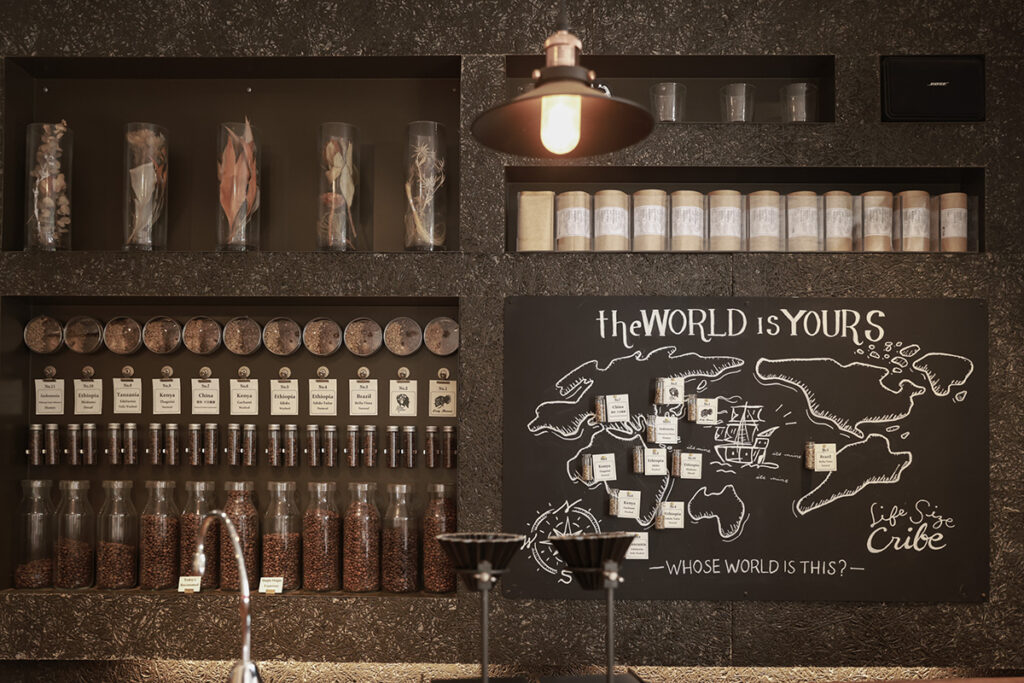
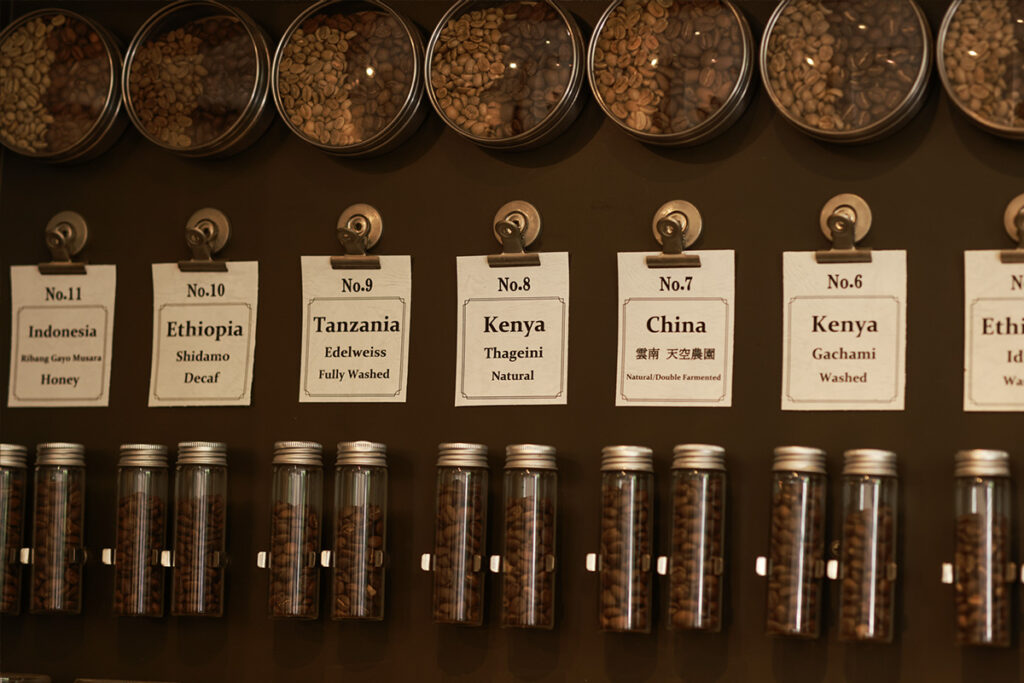
A wall display that both explains the coffee’s origin and adds a touch of theatrical presentation.
The shop roasts 11 types of beans. Numbers 1 and 2 are standard blends, while numbers 3 through 11 are single-origin beans that change based on availability. On the wall behind the counter, test tube-like bottles filled with roasted beans are displayed alongside a world map marking their origins, blending both aesthetics and practicality.
For this visit, I chose the blend. The ‘Lady Brown,’ number 1, combines Ethiopian beans with a berry flavor and Brazilian beans with a caramel-like toastiness in a 50/50 mix. I chose this blend because I believe it reflects the message of those who embrace coffee somewhat like a true companion.
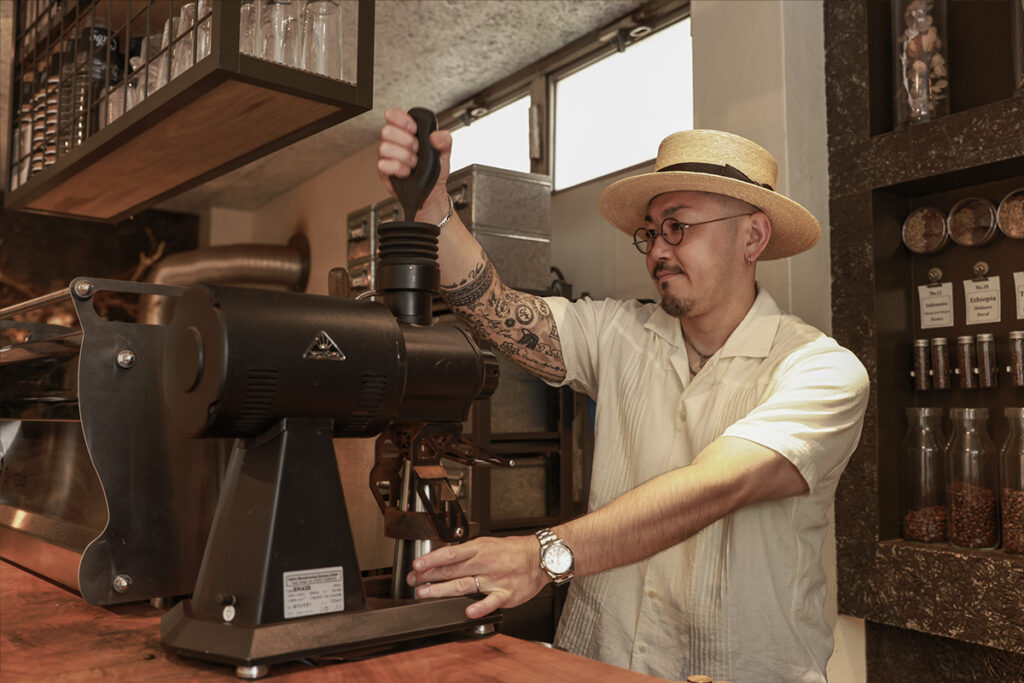

Yoshida’s use of a camera blower—a tool not usually found in a barista’s kit—is a personal touch that reflects his passion for photography.
The process begins with grinding the beans. Yoshida removes a mini bottle for a single serving from the wall and pours the beans into a customized Brooklyn-made grinder, the Mahlkönig EK43S. Using a blower, Yoshida ensures that no powder is wasted. For hand-dripping, he uses an ‘ORIGAMI’ dripper with 20 ceramic ribs to ensure smooth extraction. Next, he sets up a ‘Melodrip’ device, which drizzles hot water like rain, and meticulously levels the dripper with a camera level, adjusting for even the slightest tilt. “It’s a ritual to ensure a consistently exceptional flavor,” Yoshida explains, reflecting his delicate and refined approach.
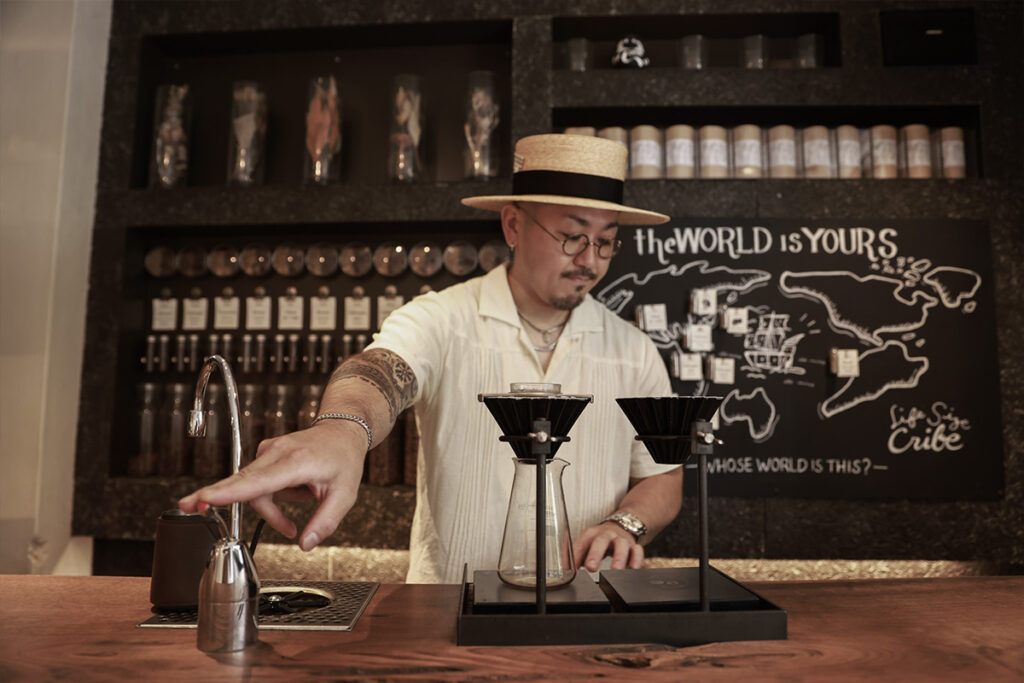

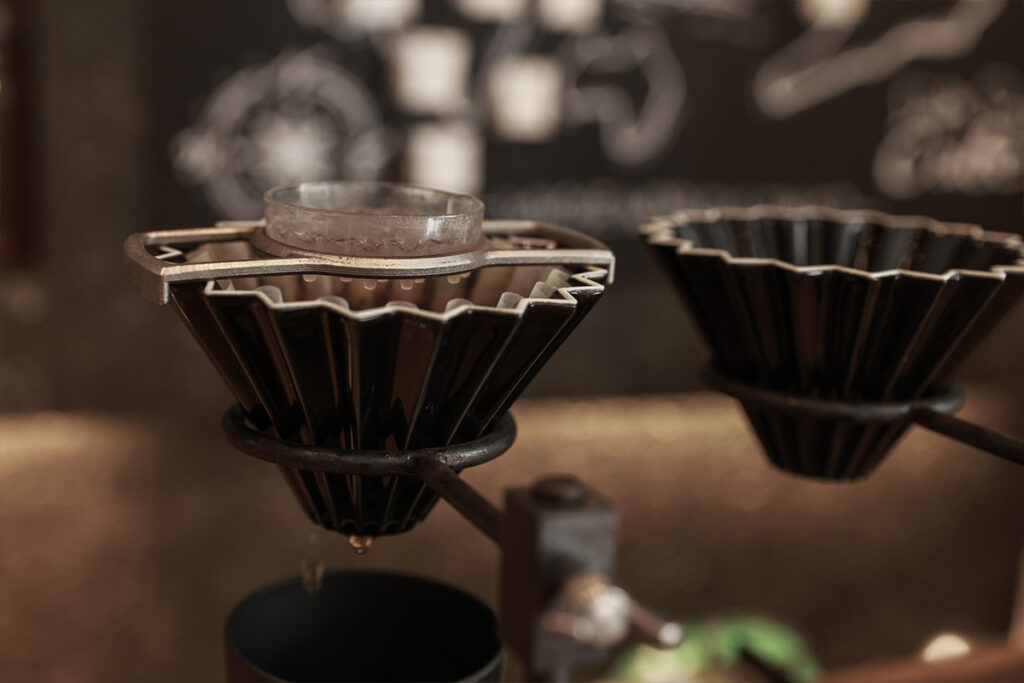
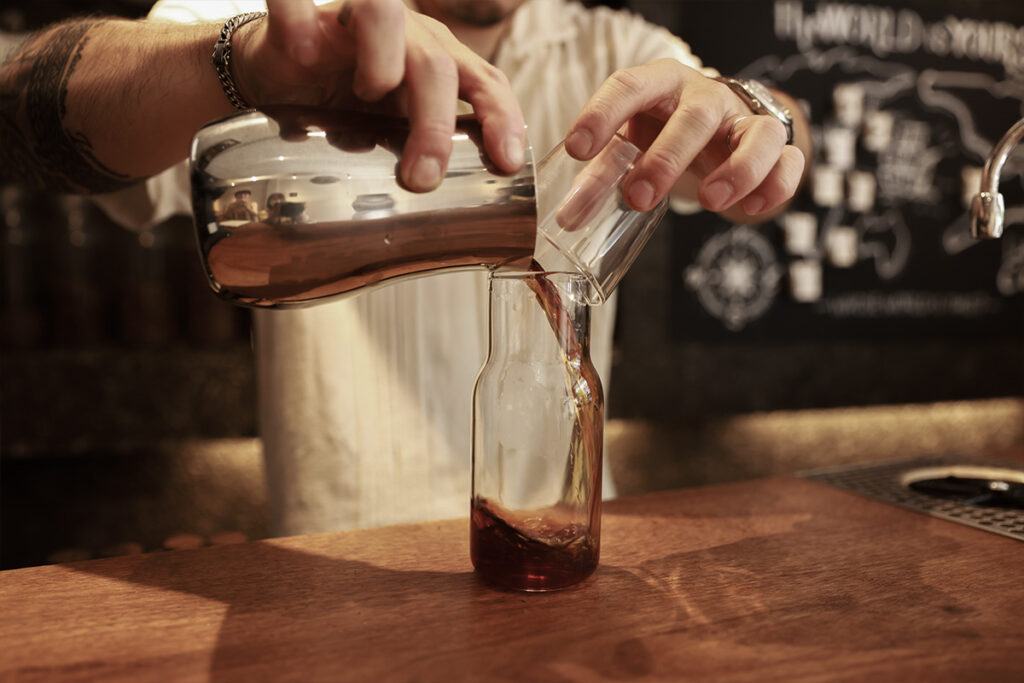
His movements are swift and precise, flowing with a sense of grace and purpose.
When it’s time to pour the hot water, Yoshida uses a unique setup to quickly heat the brass kettle, server, and vessel with just a touch. Next, he pours the water quickly through the Melodrip device, which evenly distributes droplets across the entire surface of the coffee grounds. The brewed coffee is transferred to a stainless steel decanter, which he swirls five times in each direction. This decanting process polishes the liquid, while enhancing and mellowing the flavor. Instead of pouring the coffee directly into a cup, Yoshida first transfers it to a glass carafe. He then covers the carafe with a cup to trap the aroma and keep the steam from escaping during the transfer.
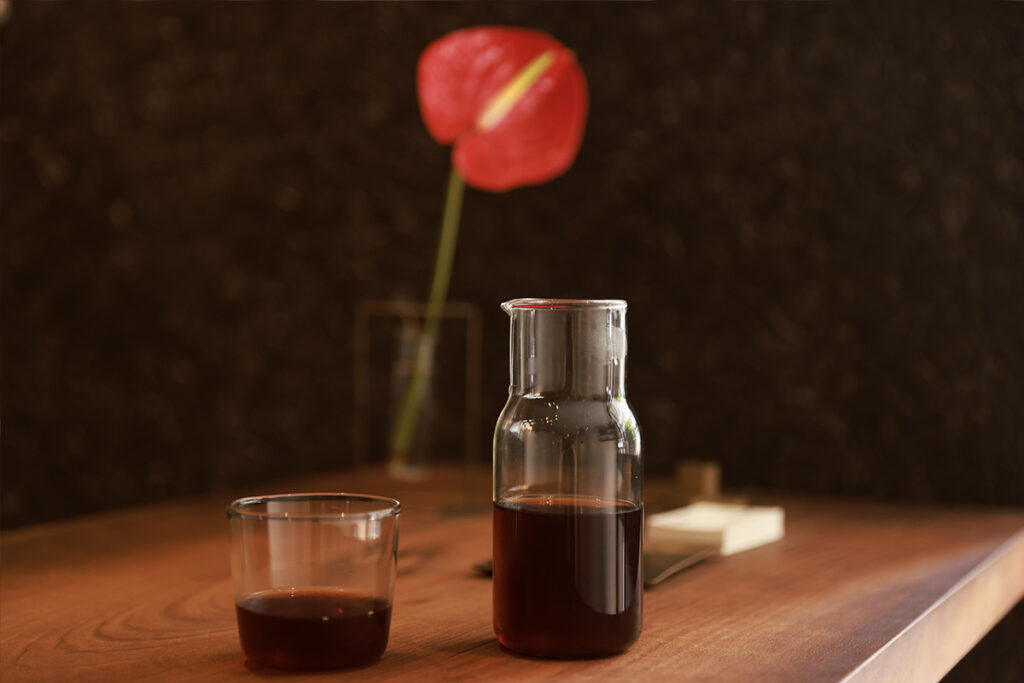
Enjoying a freshly made cup of Life Size Cribe coffee, right in the shop.
The final cup of coffee is as captivating as the meticulous process leading up to it. When the coffee is poured into a glass container, the dark liquid reveals a surprising reddish amber hue. Before tasting, focusing on the aroma, you notice the blend of berry-flavored Ethiopian beans and caramel-sweet Brazilian beans, conjuring the image of strawberry chocolate.
“As much as you might mix two types of beans equally, you can’t measure the exact proportions after blending. That’s why the flavor of a blend is unique, and sometimes a once-in-a-lifetime experience. I hope people enjoy that,” says Yoshida.
He adds that, whether in the shop or when brewing with purchased beans at home, he aims to achieve a ‘well-rounded’ coffee flavor. This insight reveals a heartfelt side of Yoshida.
Perhaps the true essence of great coffee is nurtured more in the moments beyond the act of brewing itself. To explore this idea, we took a closer look at a chapter from Yoshida’s journey.
Coffee That Tells Its Story in Full, Life-Sized Detail
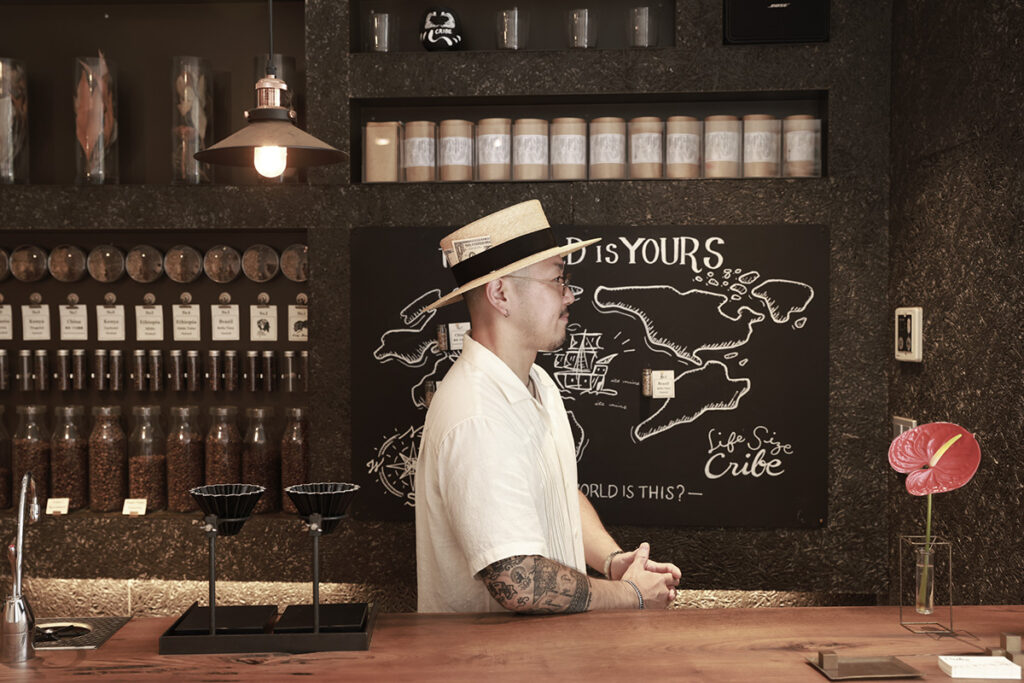
Also possessing a keen sense of style, he effortlessly dons a Panama hat from ‘THE H.W. DOG&CO.’
With an impeccable fashion sense, a striking appearance adorned with tattoos from head to toe, and a disciplined elegance in his coffee-making, Yoshida’s presence may seem somewhat intimidating at first. Yet, the shop he runs is in Kokubunji, a slow paced suburban area in west Tokyo, where he spent his student years.
As a teenager, Yoshida was deeply immersed in dance and even competed in breaking battles. He was captivated by the live energy of quickly showcasing speed, balance, and creativity. Inspired by his desire to one day create an ‘American diner-like’ space with his cultural peers, he found himself drawn to the coffee industry through casual conversations with friends during his job search.
His first job was at Doutor Coffee, a chain with locations across Japan, where he worked in Otemachi, a business district frequented by office workers. In a shop that mostly saw morning customers, Yoshida focused on building relationships with regulars. He learned their faces and order preferences, seamlessly handing over coffee as soon as the shop opened, and never forgot to add a personal touch. Over time, businessmen who only visited in the morning began to show up for lunch and dinner. Sales visibly increased, and Yoshida was promoted to store manager as the youngest in the company. Discovering the role of barista through the Italian style bars ran by the same company, Yoshida began to explore his ideal barista style by visiting various bars after work.
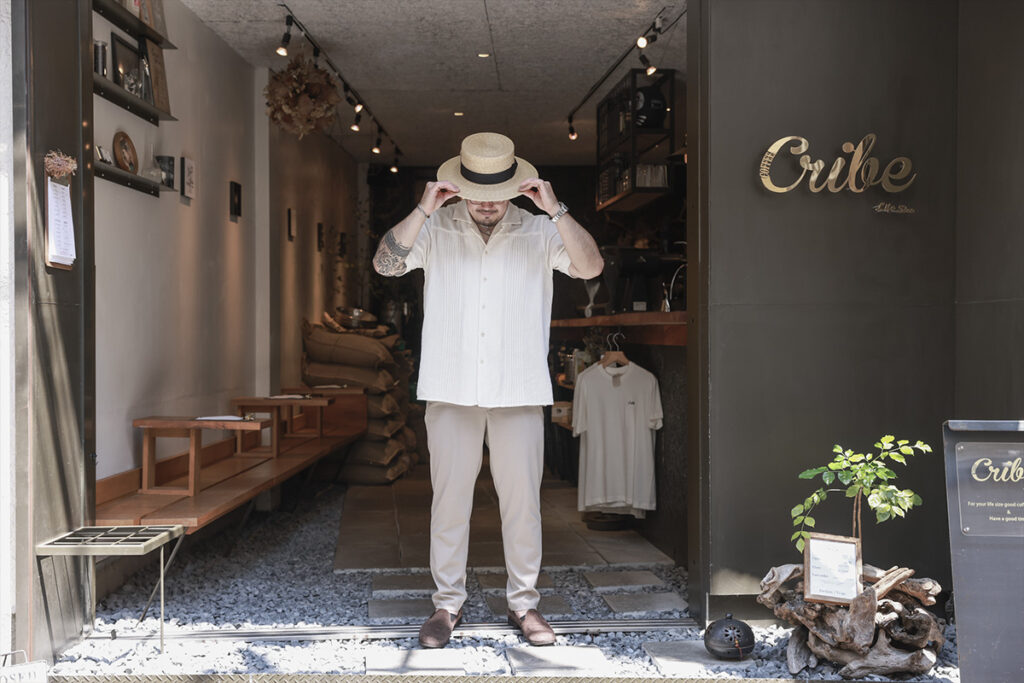
He reflects that the time he spent fully immersed in mastering coffee has all brought him to where he is today.
After his first job, Yoshida took the next step in his career, seeking to work at Paul Bassett, the renowned café founded by the world barista champion who introduced specialty coffee to Japan. Although he didn’t get in after one or two applications. Realizing that waiting for the right opportunity wouldn’t open any doors, he took matters into his own hands and secured a part-time position after negotiating with the company. From the first train in the morning until the last train at night, Yoshida spent his days cupping alongside his fellow baristas, who were also his rivals. Once he became a full-time employee, he expanded his role beyond being just a barista, taking on responsibilities like bean management and roasting. About two years later, equipped with top-tier skills and knowledge, Yoshida ventured out on his own, fulfilling his long-held dream of creating a space for friends to gather by opening Life Size Cribe.
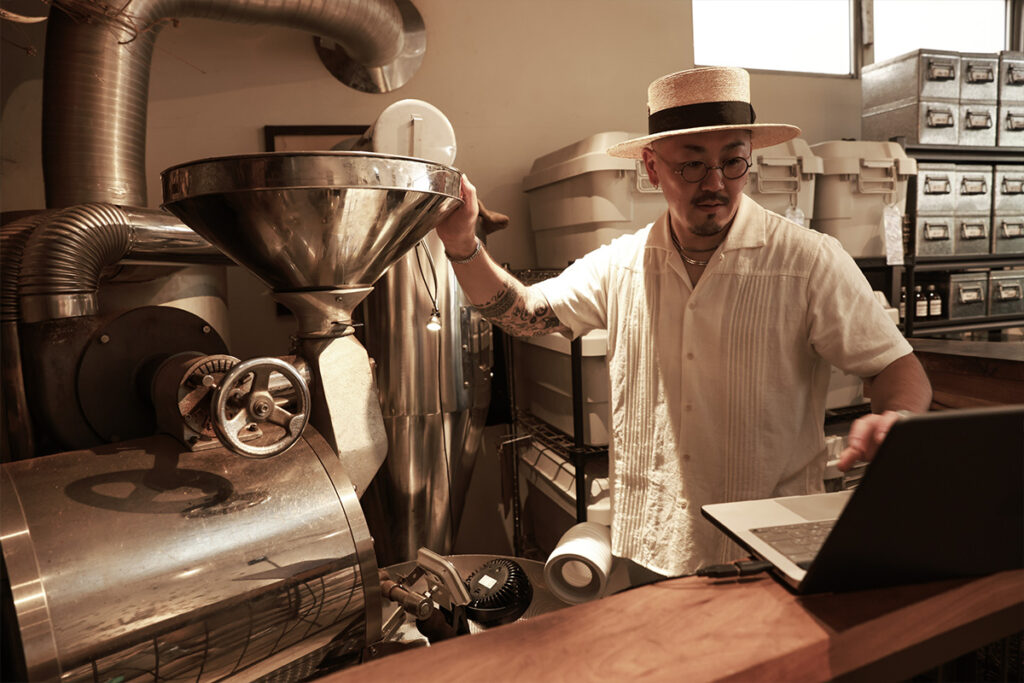

The approach of serving customers while simultaneously roasting coffee beans remains unchanged. The roasting process is done slowly at a low temperature, with the beans being carefully roasted to a medium or medium-dark level, depending on their characteristics.
When the café first opened, it quickly became a hotspot for coffee enthusiasts in the first 3 months. But by the six-month mark, things took a turn. In this quiet, laid-back community, where life moves at a relaxed pace, his meticulously crafted coffee philosophy wasn’t resonating with the locals.
“I might have let my experience at a world champion’s cafe get to my head,” Yoshida admits.
Recognizing this, he decided to start by getting to know the neighborhood. Every morning, he would clean the back alleys and greet the people passing by. He also added terrace seating to create a more inviting atmosphere.
“One day, while chatting with a customer, I realized something—I wasn’t smiling as much as I thought I was. I came to understand that coffee is less about achieving perfection and is more creating a way for people to connect with each other,” Yoshida reflects.
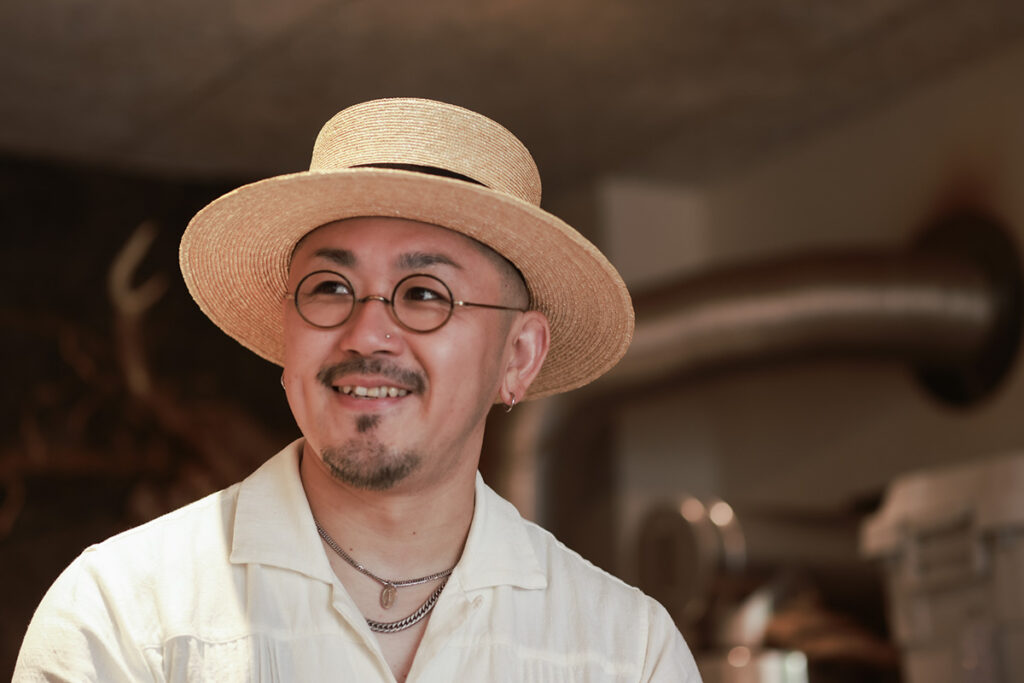
Now, the café has become a place where regulars gather, drawn by Yoshida’s genuine smile and his thoughtful conversations.
Yoshida came to understand that coffee is not the ultimate goal in life but a means to bring joy. In Kokubunji, his aim is to create ‘coffee that seamlessly fits into daily life.’ By staying rooted in the community, his café has become a staple and is set to celebrate its 10th anniversary next year. It’s the culmination of blending two sides: the A-side dedicated to coffee and the B-side focused on the friends from his student days and the local community. Both aspects are approached with genuine dedication, shaping the present moments.
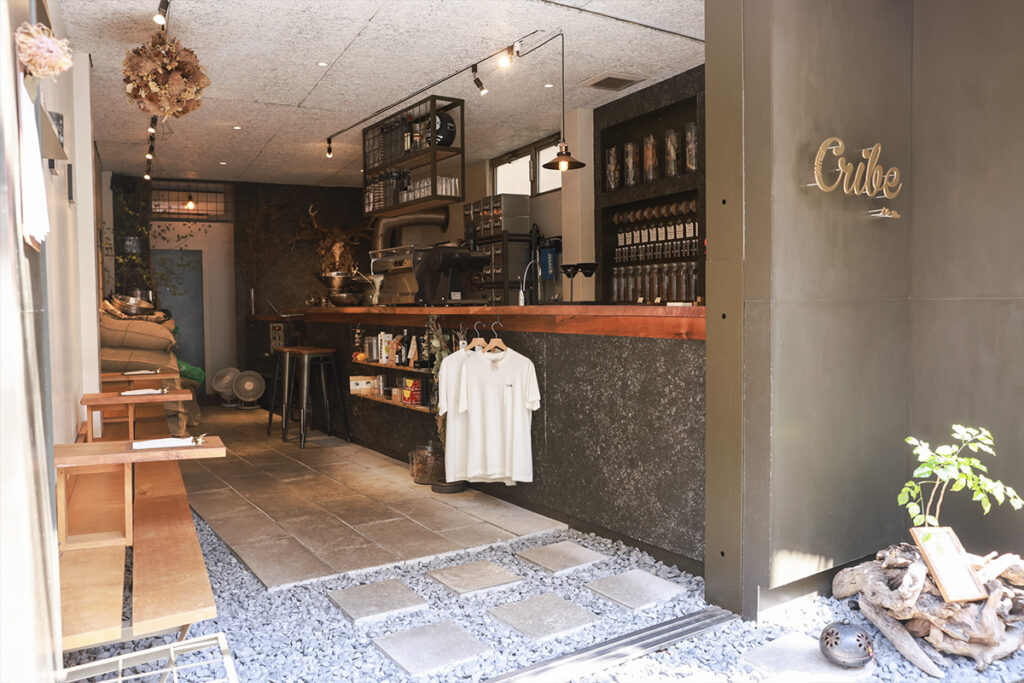
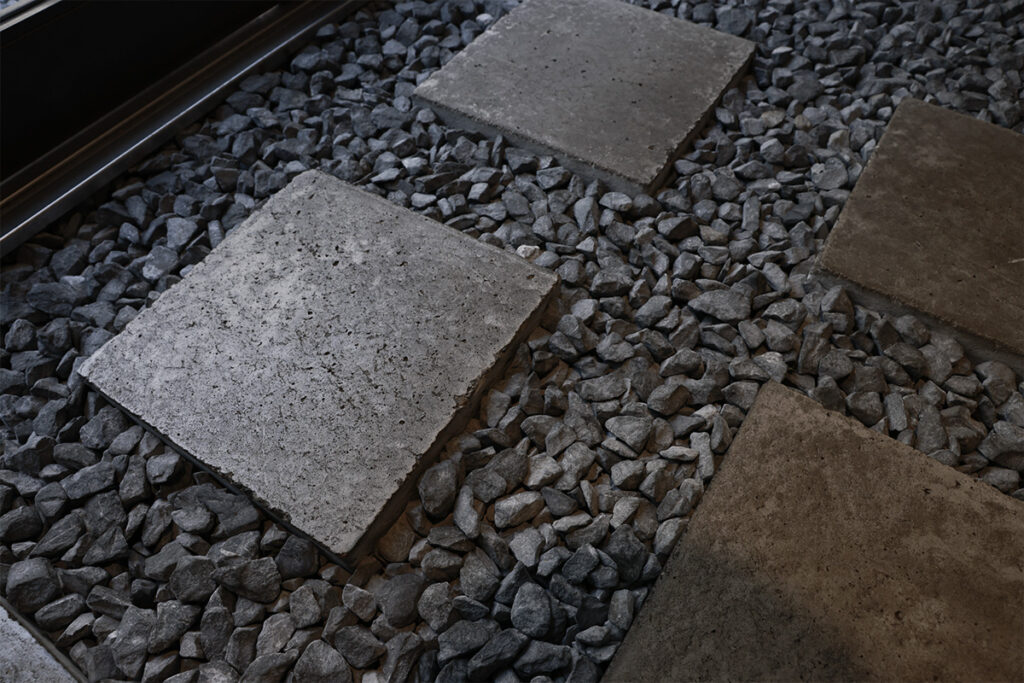
Four years ago, the café underwent a renovation, incorporating Japanese elements. The floor was updated with paving stones and pebbles, and a bench was designed to evoke the feel of a traditional ‘engawa’ (veranda).
When asked about the origin of the café’s name, Yoshida explained that ‘Life Size’ reflects the principle of staying true to oneself, while ‘Cribe’ represents a hideaway, gathering place, or special spot—derived from the phrase ‘crib to live.’ There’s a Zen philosophy, ‘shikon,’ which conveys the idea that “now is only now, and you are only yourself,” and this mindset is infused in Yoshida’s approach to coffee. By embracing the present, his coffee will continue to evolve, adapting with depth and versatility over time.
◾️SHOP Life Size Cribe Website:https://lifesizecribe.com/ Address: 3-5-5 Honcho, Kokubunji, Tokyo Phone: 042-359-4644 ◾️COFFEE Roast Level: Medium to Medium-Dark Roaster: ‘Fuji Royal’ Semi-Hot Air Roaster Grinder: Mahlkönig Extraction: Paper / ORIGAMI Types: Single Origin (9 varieties), Blend (2 varieties: Lady Brown, Green Continent) Water: Equipment: Glass decanter & glass

